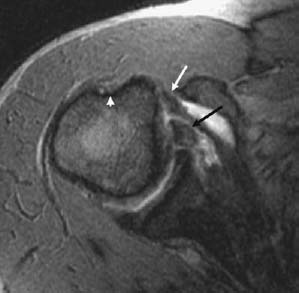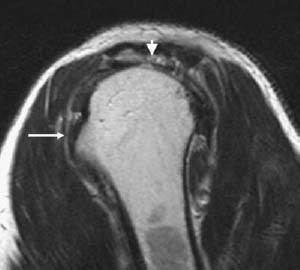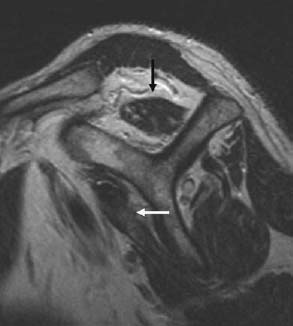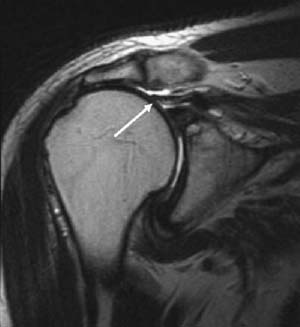CASE 16 Kevin Rowan, Anthony G. Ryan, Peter L. Munk, and Bruce B. Forster A 55-year-old man presented to us with chronic shoulder pain, decreased range of motion, and decreased power. Figure 16A Figure 16B Figure 16C Figure 16D An axial T2-weighted gradient recalled echo (GRE) image (Fig. 16A) shows a medially dislocated long head of the biceps tendon (black arrow) anterior to the glenohumeral joint. The bicipital groove is empty (white arrowhead). The subscapularis tendon (white arrow) is torn from its attachment to the lesser tuberosity. A sagittal oblique T2-weighted image at the level of the humeral head (Fig. 16B) shows absence of the subscapularis (white arrow) and supraspinatus (arrowhead) tendons, consistent with full-thickness tears of both tendons. A sagittal oblique T2-weighted image at the level of the scapula (Fig. 16C) shows marked atrophy of the supraspinatus (black arrow) and subscapularis (white arrow) muscles. A coronal oblique T2-weighted image (Fig. 16D) shows a complete tear of the supraspinatus tendon (arrow) with retraction from the humeral insertion site. Medial dislocation of the long head of the biceps tendon, with associated subscapularis and supraspinatus tendon tears.
Long Head of Biceps Tendon Dislocation
Clinical Presentation




Radiologic Findings
Diagnosis
Differential Diagnosis
Stay updated, free articles. Join our Telegram channel

Full access? Get Clinical Tree


